
Related Article: The Arts at Punahou Timeline
Related Article: Curricular and Co-curricular Experiences
Drawing Inspiration, One Panel at a Time | In Her Own Right: The Power of Storytelling
| Defying Gravity
| Forging Bridges |
Second Nature: Hula, Leadership and the ‘Āina
| From Stadiums to Stand-up
| Finding Her Forte
By Gina Gelber
Since Punahou’s inception, our pioneering educators have intertwined learning and creativity – long before the modern-day body of research extolling the benefits of arts in education.
Archival records show that drawing classes were part of Punahou’s initial curriculum, often taught by the wives and daughters of missionaries. Also striking is the fact that the first cohort of students reported to the School on July 11, 1842 – and that by August, merely a few weeks later, the first evening singing classes were being celebrated.
As academic institutions nationwide began to increase their offerings in music and art, Punahou embraced that movement. Gradually, the School built its programs, starting with the Music Department in 1890, which began with one hired instructor to teach voice, piano and chorus.
Today, Punahou’s arts programs – visual arts, music, theatre, dance and Hawaiian arts – are an integral part of our community of innovation. Thousands of students enjoy immersive creative experiences that foster a greater sense of self confidence, empathy and resilience.
In a world in which artificial intelligence and other potent emerging technologies are disrupting the status quo, our intrepid faculty continue to explore perennial questions such as: How will creative skills support students in fields that are still in flux? And how do the arts support students on a personal level?
“Creativity is the root of imagination and innovation and vital to the future success of our students,” says Middle School Art Faculty and Junior School Chair of Punahou’s Visual Arts Department Hugh Mosher. “It should be our job as educators to foster creative abilities.”
Mosher references an arsenal of studies from diverse organizations the likes of the World Economic Forum, the International Monetary Fund and LinkedIn which cite creativity as the defining skill of the 21st century. Equally compelling is research showing that robust arts programs are associated with improved emotional well-being and better overall academic performance in students.
This issue of the Punahou Bulletin celebrates the deep bond between the arts and our community. Our coverage starts by taking readers on the remarkable journeys of seven alumni, from all walks of life, who pursued their craft with vigor and passion.
In addition, we feature an engaging timeline that depicts the evolution of arts at the School. The section concludes with a general overview of the dynamic curricular and co-curricular experiences that continue to uplift and inspire our students – offering precious opportunities for dreaming and discovery.
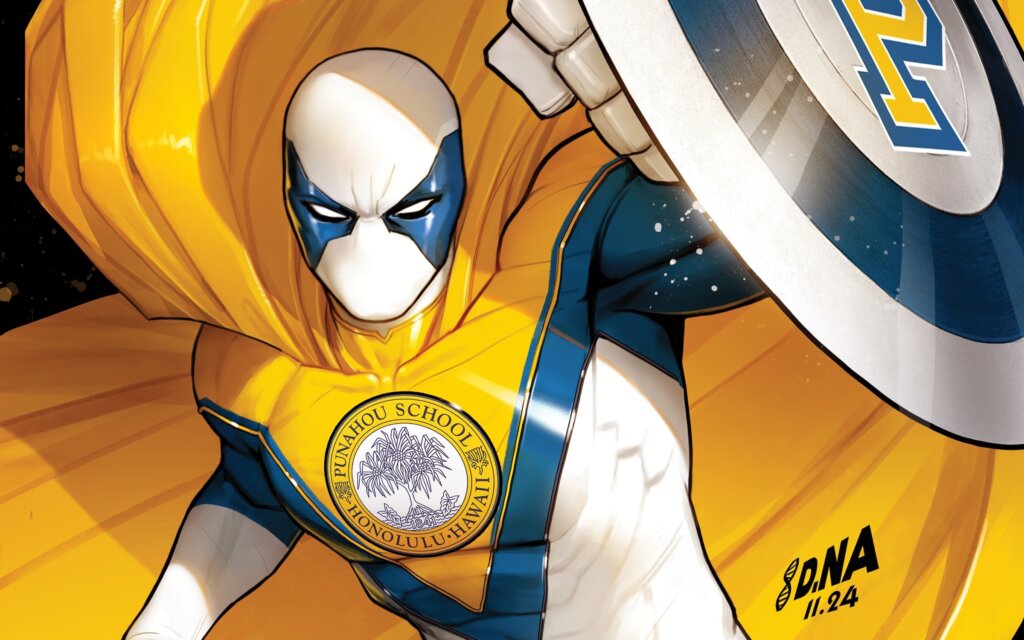
David Nakayama ’97
Drawing Inspiration, One Panel at a Time
By Ben Yuri Biersach ’87
Check out recent DC Comics or Marvel Comics books and there’s a good chance you’ll spot the eye-catching cover art of David Nakayama ’97. His work pops off the page, with attractive superheroes holding dynamic poses while bathed in attention-grabbing splashes of color.
He currently illustrates covers for both Harley Quinn and Wonder Woman at DC, and just wrapped up a Spider-Gwen cover run for Marvel. He’s also drawn art for trading cards, package illustrations for Hasbro toys, and load-screen visuals for the video game Fortnite.
Nakayama’s artistic inspiration started as a youngster attending Punahou. “When I was really little I was checking out books from the library and copying everything,” he says. “It might have been pirate ships or dinosaurs or construction equipment.”
Two Punahou art teachers – Linda Quisenberry ’61 Green and Carole Iacovelli – impacted him profoundly. Green’s seventh grade curriculum included an aloha shirt design assignment, and over 30 years later Nakayama’s effort still stands out to her. “It was quite lovely,” she recalls, “so different, so complicated and well thought-out. From the very beginning, he had his own style.”
In the Academy, Iacovelli taught Nakayama perspective and life drawing, skills that greatly inform his current artistic methods. Additionally, she served as faculty advisor for the Comic Book Club, which he founded with some like-minded classmates.
Nakayama also had a job illustrating faculty materials for the School’s Visual Production Center. “That gave me a lot of confidence that my art was good enough to put in front of other people and be paid for it too,” he says. “It was very formative and encouraging.”
After Punahou, Nakayama attended Washington University in St. Louis – a school with a College of Arts but also a robust pre-med program where he could take classes as a backup plan. This strategy was derailed after failing a macroeconomics class as a sophomore: “I realized I’d better get serious about this art stuff because the pre-med math did not agree with me. From then on, I was solely dedicated to art.”
Post-university, Nakayama studied at The Joe Kubert School of Cartoon and Graphic Art in New Jersey, supplemented with summers at the Academy of Art College in San Francisco. This led to an internship at Top Cow Productions, founded by the legendary X-Men artist Marc Silvestri, followed by freelancing work for Marvel. Nakayama was finally illustrating comic books that made it into print. His personal life was on the upswing as well: he and his wife learned they were expecting their first child.
Then, our superhero story hits a plot twist.
“In the interest of the family I decided to quit comics, believe it or not, and go to work in video games,” Nakayama says, explaining his decision to move to the Bay Area for a more stable job in a less-satisfying but better-compensated industry.
However, the artist in Nakayama couldn’t abandon his first love. “Five years into my work in video games, I was missing comics. I wrote to my old editors and said, ‘Hey can I come back and do some covers?’ By the end of 12 years in California I would be working at the video game job during the day, and then not being creatively fulfilled, I would come home and work on covers for Marvel.”
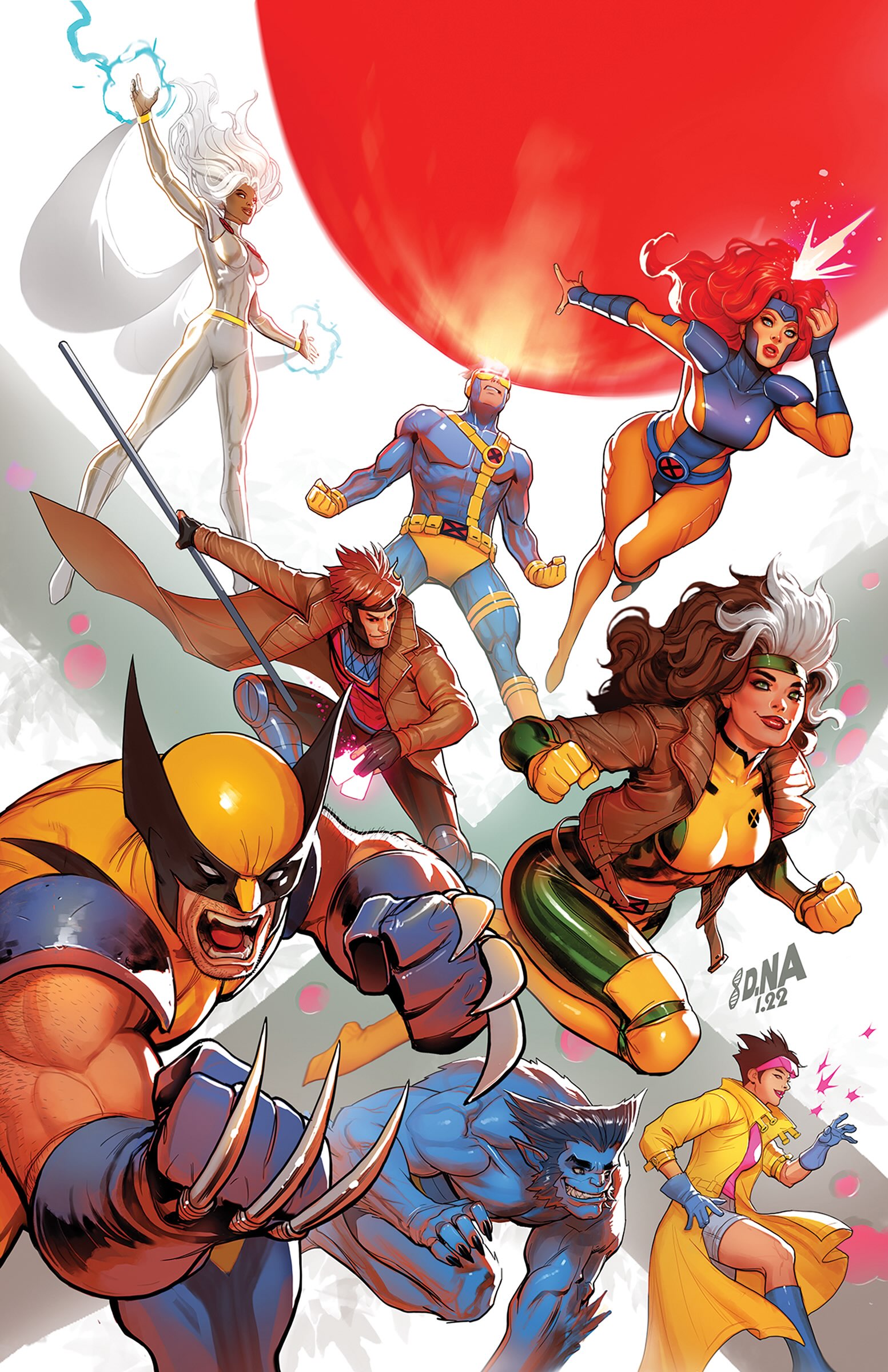

In 2018, Nakayama decided to focus on comics full-time, moving back to Honolulu with his family. Today, he possesses a level of professional and creative freedom that allows him to do his best work.
With both of his children now attending Punahou, Nakayama marvels at the supportive culture of the School. “I’ve had time to reflect on this over the years,” he muses. “It feels like every teacher and every professional at Punahou is trying to help each student figure out what they love, and then put those opportunities in front of them.”
Undoubtedly, Nakayama’s own persistence to stick it out in the comic book industry was nurtured by his experiences at the School. “Making art is a performance, and it’s fueled by the praise and support of your peers and teachers. Punahou definitely gave me that confidence early on.”
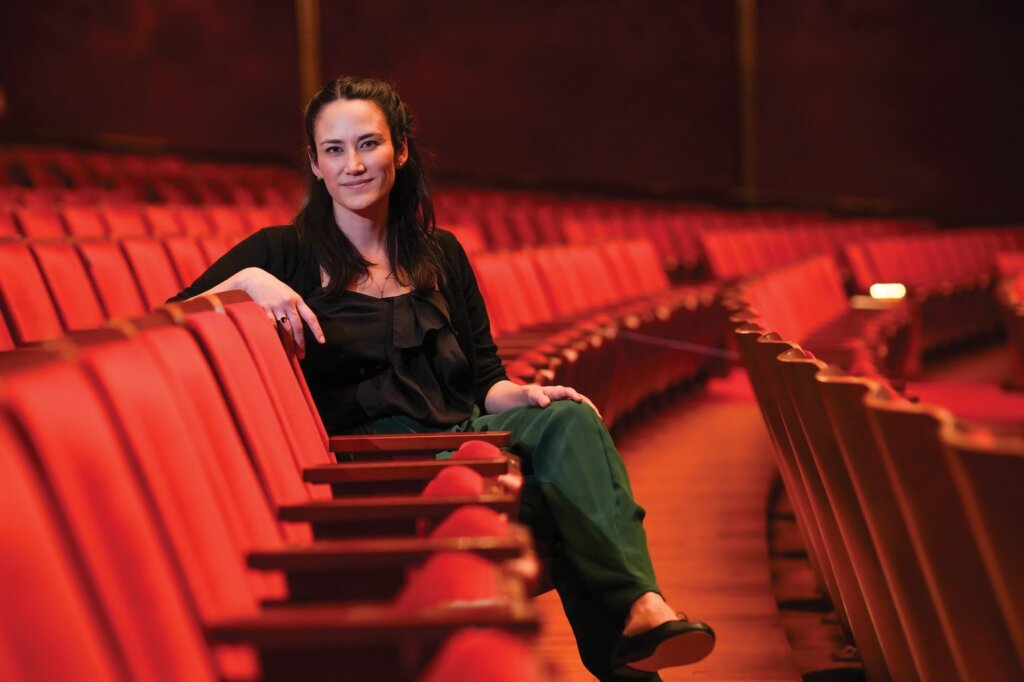
Susan Soon He Stanton ’99
In Her Own Right: The Power of Storytelling
By Lesa Griffith ’80
Tucked in Susan Soon He Stanton’s ’99 bookshelves in her Brooklyn apartment are two gold statuettes of a winged woman holding an atom. They are the Emmy Awards she earned as a writer and producer for the critically acclaimed HBO series “Succession,” which ended its four-season run in spring 2023.
The show was lauded for its rapier wit – after each episode aired, the eminently quotable zingers were documented everywhere from the New York Times to an army of blogs – and delightfully unsavory characters.
Her description of the collaborative environment of the series’ writers’ room, which was in London, conveys a sense of the complexity of creating such a smart production – multiple people contributing to the story arc, the character development, putting it into the context of our churning news cycle.
“We all worked as a team. In some ways, Season One is the most fun because we get to world build and create characters. Across the series, we also do extensive research, pulling from present-day events but also dipping into history. We also fold in our own personal experiences. This is a show about family dynamics and we wanted to make that history feel unique and real. We did many, many drafts of our scripts, even making changes on the day of shooting.”
Now Stanton’s talents are taking her in new directions. The Washington National Opera commissioned her and composer Christopher Tin to create a new ending for Puccini’s famed (unfinished) opera “Turandot.” The production was mounted last May at the Kennedy Center, earning reviews calling it a “Turandot” for our times.
Before becoming a sought-after writer and producer, Stanton honed her skills as a playwright, beginning at Honolulu Theatre for Youth with Dan Kelin, where she completed her first play at the age of 16, with fellow playwright classmate Daniel Akiyama ’99. While a junior at Punahou, she took a class with award-winning playwright Victoria Nalani Kneubuhl ’67 at Kumu Kahua Theatre, of which she says she cannot stress enough how important it is to her and to Hawai‘i.
Stanton’s drive and hustle are commendable. Her list of writing credits is long. For almost two decades, her self-imposed assignment was to write a play a year, while she simultaneously taught playwrighting at schools such as New York University Tisch School of the Arts and the University of Texas at Austin’s MFA playwriting program.
“The play wasn’t necessarily finished in a year but I would try to get a strong draft out. Some plays take over 10 years to complete,” says Stanton.
The diligence paid off. In her mid-thirties, “I was able to become a full-time writer,” says Stanton, though she loves teaching and does it when she can. “All my time is now spent researching or writing or being on set. It really is a privilege. I didn’t expect to be able to reach that level.”
Her father, historian and poet Joseph Stanton, frequently read to Susan as a child, and this exposure to stories and art helped shaped her sensibilities early on. In high school, “I was definitely a theatre nerd,” says Stanton. “I loved being in all the plays, but I wasn’t a very good actor! I remember the beautiful Dillingham Theatre and the feeling of being on that stage.”
Punahou helped shape Stanton as a writer and artist. “I had the most incredible teachers, like David McCullough Jr. and Pete Hansen ’84. Even in high school, I felt like my point of view mattered. But it was only after I left Punahou and began teaching at universities, that I realized how well prepared we were. There’s a rigor. I graduated knowing how to write a research paper, how to speak publicly, and many other skills young people should have. Later I realized how lucky we were.”
Stanton continues to write new plays, and returns as often as possible to O‘ahu where she is proudly involved in the film and theatre communities, serving as a juror for HIFF, an ‘Ohina Filmmakers Lab mentor and seeing productions of her plays on Hawai‘i stages.
“Hawai‘i is my home,” says Stanton. “I am compelled as a storyteller to write plays and films set in Hawai‘i. Hawai‘i is a unique place. Growing up there is a singular experience. It’s the truth that I know.”

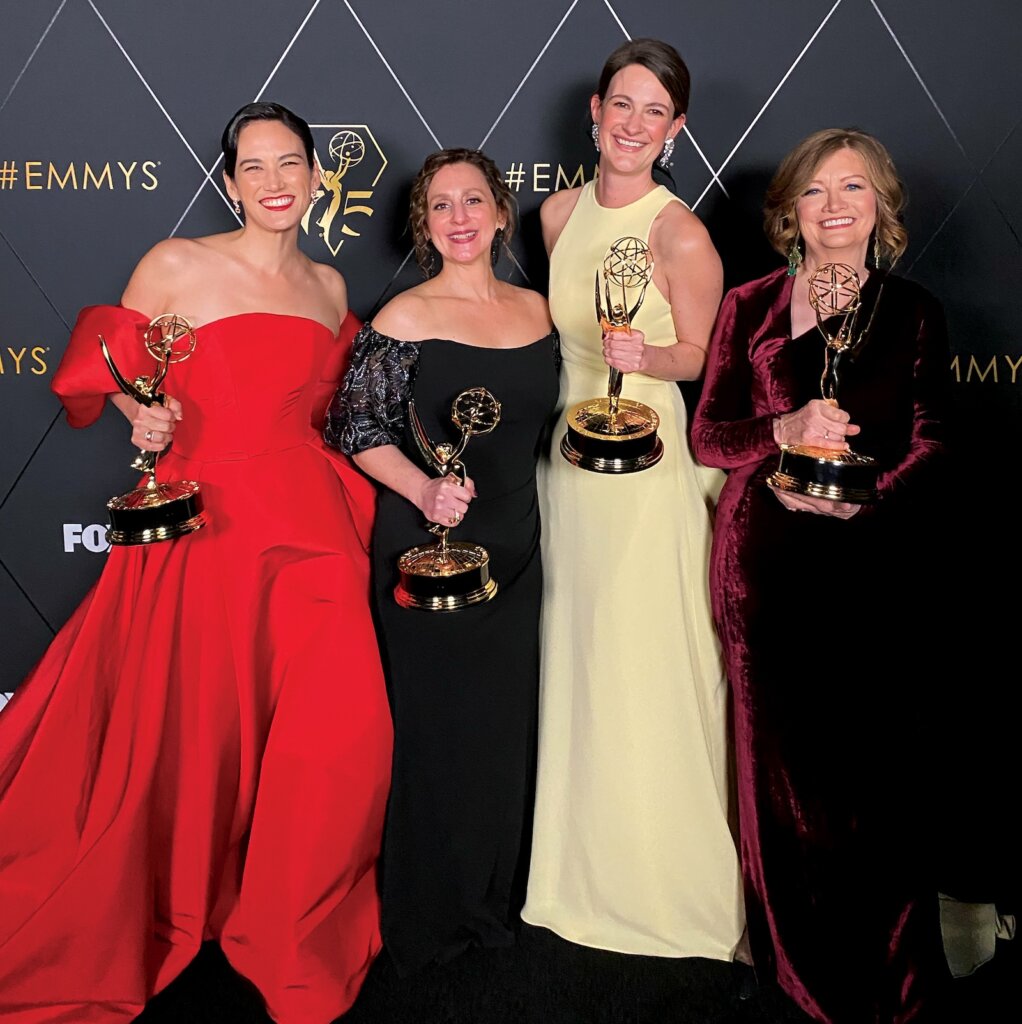
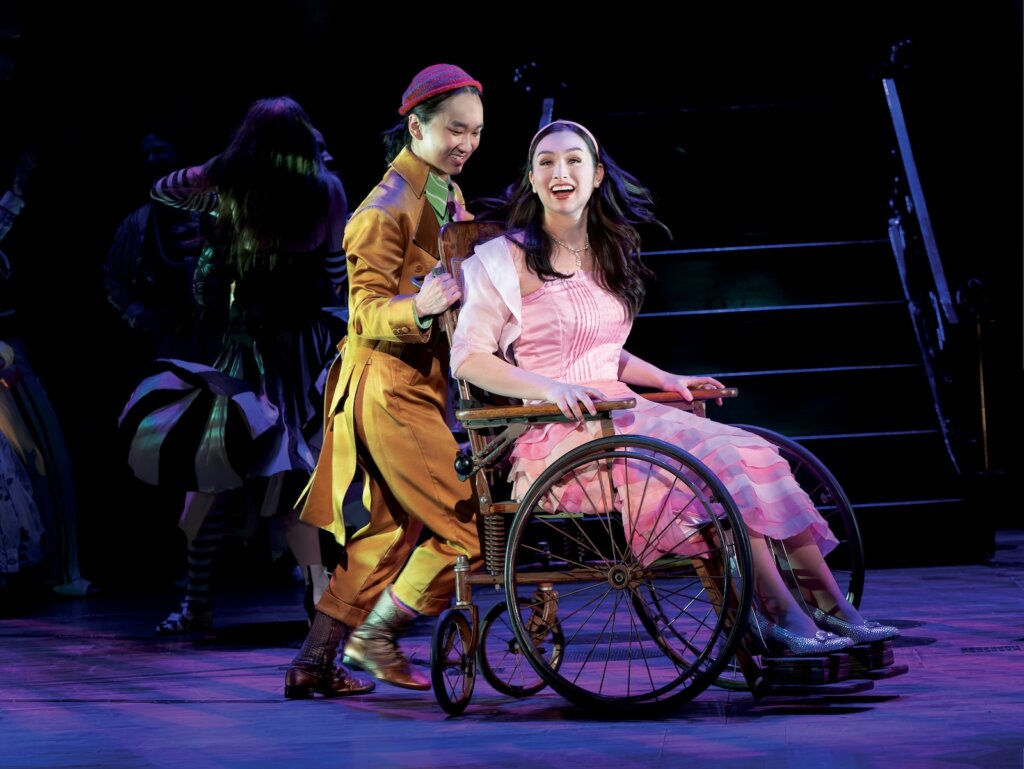
which has a loyal following among Percy Jackson fans. Photo: Joan Marcus.
Erica Ito ’17
Defying Gravity
By Lavonne Leong ’93
Erica Ito ’17 is living the dream of many young actors. Eight times a week, she dons her costume and stage makeup and joins the cast of the North American tour of “Wicked,” the twisted fairy-tale hit musical. Since May 2024, Erica has played Nessarose, the Wicked Witch of the West’s complicated sister, for audiences across the United States and Canada.
Except for the pay and the touring life, it’s not that different from what she’s been doing since she entered Punahou for the first time as a sixth grader and auditioned for “Anything Goes,” that year’s middle school musical, and was cast in the ensemble. From the first note, she was hooked – on the music, the period costumes, the dancing, the sense of camaraderie.
Bitten by the theatre bug, she learned everything she could, whether it was the improv club with Steve Wagenseller, the inaugural Broadway Bound travel program with John Roberts, or the Senior Tap Company with Caryn Yee ’85. “Whether it was middle school or high school, they were so devoted to us,” she says of her teachers at Punahou. “I had a lot of kids in my year who were really into theatre. Our teachers saw that this was something we were passionate about. They were so excited that we were excited, and they wanted to give us every opportunity to explore that as far as we wanted to go.”
When I catch up with Ito, she’s doing laundry in the San Francisco-area flat of her best friend from sixth grade, Carter Nakamoto ’17. That Punahou connection led to another arm of Ito’s multifaceted performing life: “Seaweed Brain,” their popular Percy Jackson-themed podcast, born of a shared love for the young adult series and being stuck at home during the pandemic.
With time on their hands, they reread the Percy Jackson books and had an idea, says Ito: “What if we start a podcast where we just talk about the books for fun? We did that in 2020, and then we just kept doing it.” With their sparky rapport and Ito’s improv training, “Seaweed Brain” caught fire with Percy Jackson fans, and by the time the Disney+ series premiered in New York in 2023, Ito and Nakamoto were in attendance. As of this writing, the podcast has 22,600 Spotify subscribers and 1.3 million all-time plays.
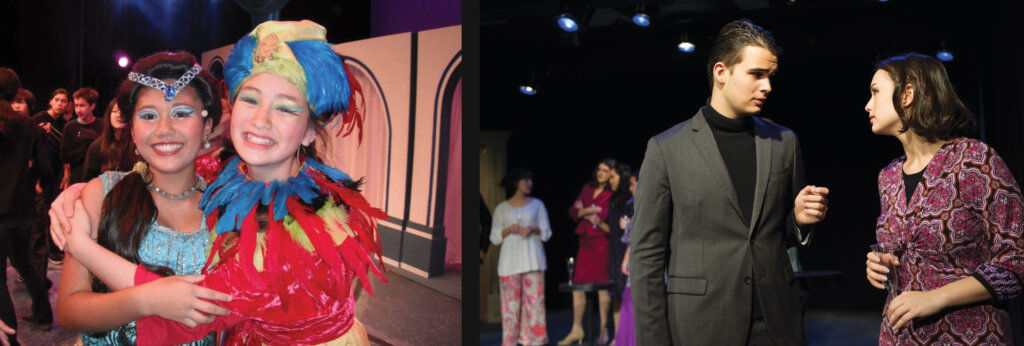
As a student, Ito participated in many productions, including “Aladdin” and “Merrily We Roll Along.”
Because it’s 2025, Ito is not limiting herself to a traditional acting trajectory. She has been exploring performance horizons made possible by new technology. Before she joined the cast of “Wicked,” Ito showed up every week at her friend’s house in New York to draw on her improv skills and play a character in Brunkhollow, a still-unfolding Dungeons & Dragons campaign that is livestreamed on YouTube and Twitch, a platform that generated $3 billion in revenue in 2023.
Ito wants to keep the traditional acting stream – film, TV, and theatre – going too, although her criteria for success have evolved. When you’re younger, you want to see your name in lights or as the first name in the credits, she explains. But “then when you get to your 20s, you just want to be consistently working. So I hope that 20 years from now, I can look back and say, ‘I didn’t give up.’”
Recent highlights have included former Punahou teachers Heather Taylor ’92, who cast her in “Anything Goes,” and John Roberts, who chaperoned her first time seeing “Wicked” on Broadway as a middle schooler, coming to see her during “Wicked’s” Denver run. How did it feel for her former teachers to be seeing her as a professional? “It’s so emotional,” says Ito. “You just hope you do a good job. There aren’t enough words to say how appreciative you are of everything that they’ve done for you, so you just feel like, ‘If I can do a good job on stage, then hopefully they will see what a good job they did, 10 years ago.’”
Do her future goals include teaching one day? For sure, says Ito. “I have such reverence for my theatre teachers. I think what they do is so important, and it would be an honor to one day do what they do, and deal with a bunch of hyperactive, neurotic 10-year-olds who just want to do a play. That’s much harder than what I’m doing now!”
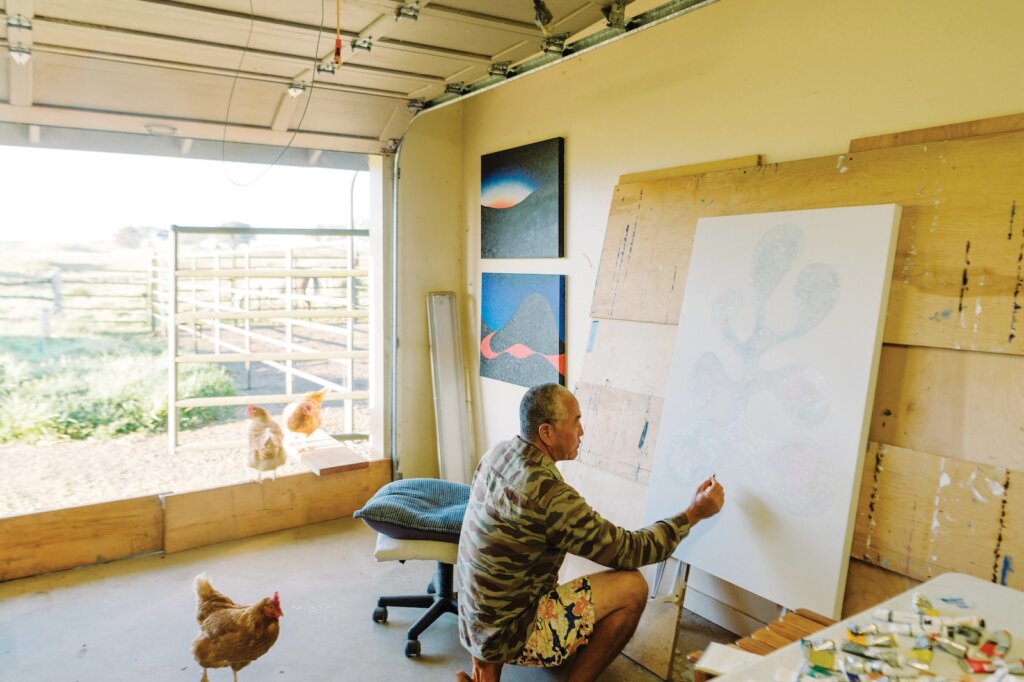
John Koga ’82
Forging Bridges
By Lesa Griffith ’80
Sitting in his childhood home in Mānoa Valley, artist John Koga ’82 remembers how as a tyke he spent time under the care of his ojichan (grandfather), who had come to Hawai‘i as an issei plantation worker. “He was a musician, a woodcarver, he tended to the gardens here, he made kokeshi dolls – that’s what I grew up with,” says Koga. And while his mother went into education, founding the Department of Dental Hygiene at the University of Hawai‘i, “she was also a painter and ceramicist and was at school with people like (influential ceramists) Harue McVay and Toshiko Takaezu.”
So when Koga’s family realized he wanted to pursue art, “they were extremely supportive even though I didn’t know what the heck I was going to do,” he chuckles. (Though his father, a stock broker, did advise his son to take business classes.) Some 40 years later, Koga is the unseen sinew connecting the muscle and bone of Hawai‘i’s art world. Now one of Hawai‘i’s best-known artists, he has spent as much energy orchestrating opportunities for others as he has on his own work.
His career path has been charted by a series of fortunate circumstances, mixed with his own determination. Take, for example, the way he met one of his mentors. In the late 1980s, Koga’s wife Kajsa was working for the Coast Guard. One day she asked her husband if he would like to meet her colleague’s artist father. “I said sure, who? She said Satoru Abe. Crazy, right?” Koga says with his infectious laugh. “That’s how my relationship with him started. And from there so many things flourished.”
He thinks that is what motivates him to help other artists. “People were so kind to give me opportunities. Satoru Abe was a gift of knowledge and sharing, so it is natural for me to continue that role wherever and however I can.”
While earning his MFA in ceramics at UH, Koga got a job at the State Foundation on Culture and the Arts, where he learned art preparation and installation. From there he became the art preparator for the new Contemporary Museum.
All of a sudden Koga was meeting international artists and observing the workings of the museum world. “You start to look at the game, see the politics,” he says. “I was in the middle of all the people that supported the visual arts, and I eventually realized that was a gift.”
He began to leverage his new network. From holding pop-ups in private homes where collectors connected with artists to more recently helping restaurateur Nori Sakamoto jump start the ARS Café gallery program.
In 2007, Koga connected with the New York-based furniture and art gallery Ralph Pucci. Koga’s work is inspired by nature but on a much grander scale. He creates sculptures that are smile-inducing organic forms and almost-abstract landscape paintings that are still recognizably inspired by Ma¯noa or Maunakea. Ralph Pucci represents this oeuvre, and in 2018 the gallery invited Koga to create a line of lighting and furniture.
Looking back at his formative years, Koga says that “Punahou certainly believed in the arts. It was mindblowing – they had the facilities and the teachers were so supportive.” He fondly remembers early influences like Joyce “Ma Fin” Finley, Bob Badham, Bob Guenther and Dee Van Dyke. But he adds that “there needs to be more language about your options in the greater picture.”
“When I’m in the process of making a painting or sculpture, it is literally problem solving and those skills are enhanced when you’re in the process of using your hands. Something happens in the brain,” explains Koga. “Yet I was never told, even in art school, that you could work at a museum, you could do art conservation, you can hang art – all these different skills within that world that can be a career.”
In 2019, Koga and his family moved to Waimea on Hawai‘i Island. Koga’s studio is now a converted stable, allowing him to go big. The switch to country life hasn’t slowed his artmaking. He is energized by the new communities that have embraced him – organic farmers, kapa makers, paniolo. But perhaps best of all is the discovery of self: “More and more now, I am realizing being grounded and being present is important.”
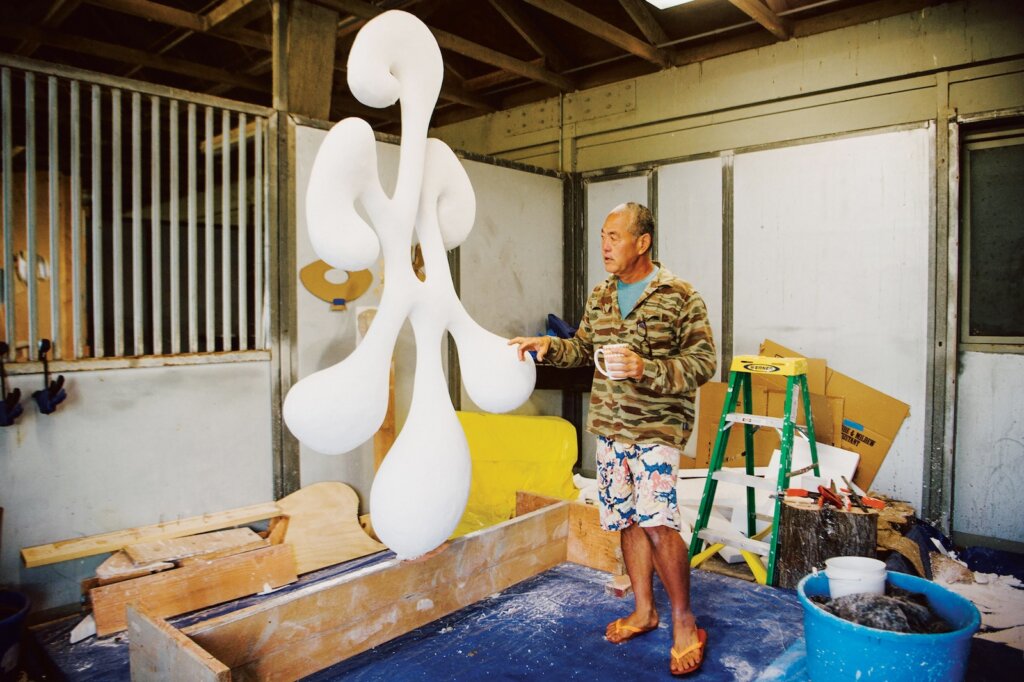
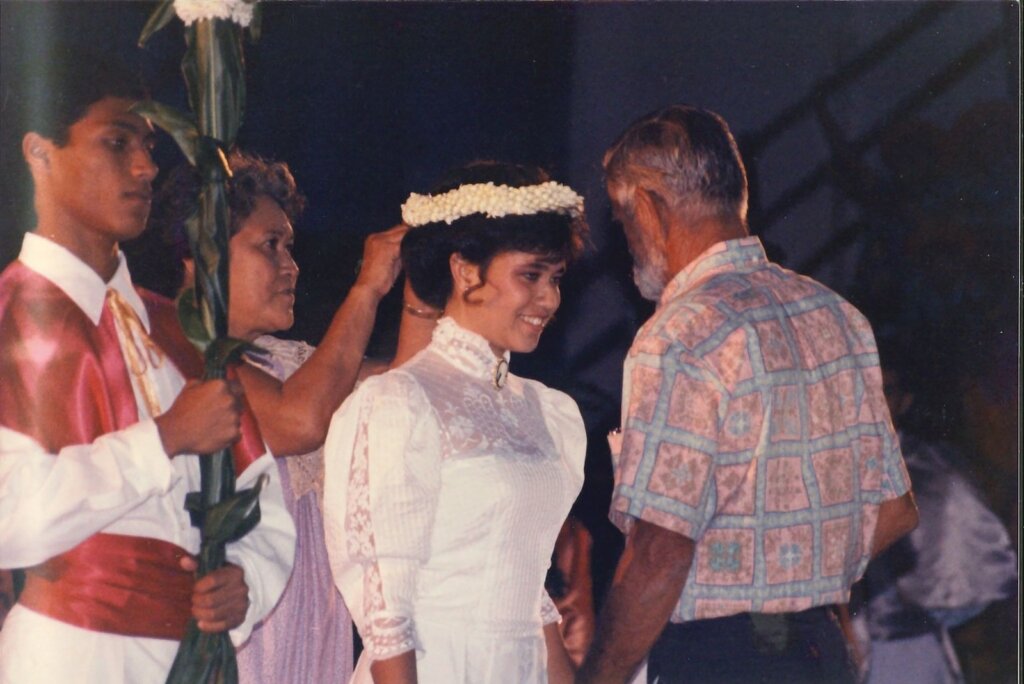
Ulalia Woodside ’88 Lee
Second Nature: Hula, Leadership and the ‘Āina
By Noelle Fujii-Oride
As a young child carrying on her family’s tradition of hula, Ulalia Woodside ’88 Lee quickly learned that the dance was much more than an art form. It was – and still is – a lifeway and the lens through which she perceives the world.
“Being raised in a hula family, in a household with a kumu hula, hula is life,” she says, recalling how her kumu hula mother’s dances were informed by her relationship and interactions with nature. The way the ocean moves, the way O‘ahu’s mountains stand tall, the smell of flowers in trees and histories were all incorporated into hula.
“Hula and nature were embedded and a natural part of the way in which we lived almost each and every day,” Woodside Lee says.
That lifeway was enhanced by constantly being immersed in nature thanks to her father’s work as a wildlife biologist. In teaching her about the Islands’ ecosystems, species and habitats, she inherited his passion for celebrating, protecting and restoring Hawai‘i’s environment.
“Through hula, you are also able to touch many, many more people to share stories and to inspire passion for place along with the responsibility we have to Hawai‘i, the natural things of Hawai‘i, as well as the stories and the history.”
Woodside Lee became a kumu hula in 2008 after completing her ‘uniki rites of passage under her sister Kumu Hula Hōkūlani Holt-Padilla. She was part of hula presentations “Kūlanihāko‘i: Living Waters” and “Kahekili.” “Kūlanihāko‘i: Living Waters” explored the many facets of water while telling the story of Kūlanihāko‘i, a mystical lake in the heavens from which all life flows. “Kahekili” told the tale of Maui chief Kahekilinuiahumanu; the production was honored by the National Endowment for the Arts’ American Masterpieces Dance Initiative in 2007.
She says the diversity and richness of her experience at Punahou School helped her to embrace her creativity so that she could be a contributing partner to those productions.
Hula had already taught her that there’s no getting around the time and effort it takes to perfect a dance. But Punahou School’s jewelry and glassblowing Academy classes helped her better appreciate how mastering techniques enabled an artist to then bring in their creativity and take their art to the next level where someone else can see the totality of their work and feel something from it.
Ultimately, Woodside Lee chose a career that combined her mother’s and father’s passion for hula and nature. During and after college, she worked as a student hire and then a land agent for the state Department of Land and Natural Resources. She later worked for a private firm, where she helped with cultural and environmental assessments and master-planned developments.
The experience helped her understand how much Hawai‘i’s environment has lost and continues to lose – and why it’s important to rediscover old chants and hula, and to create new cultural content.
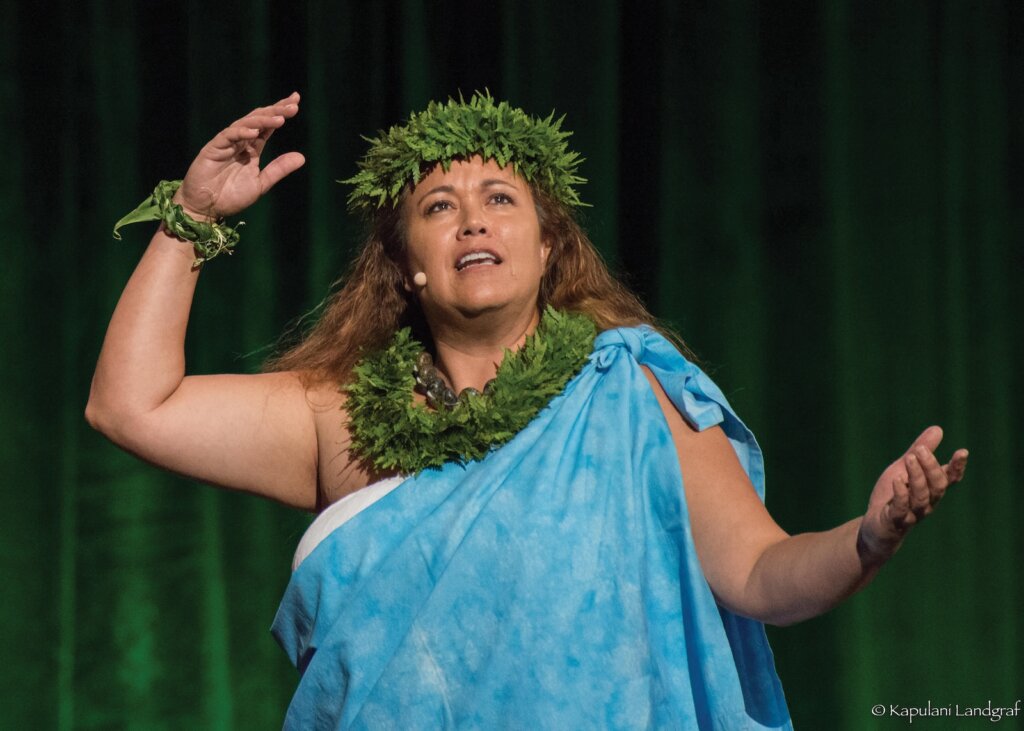
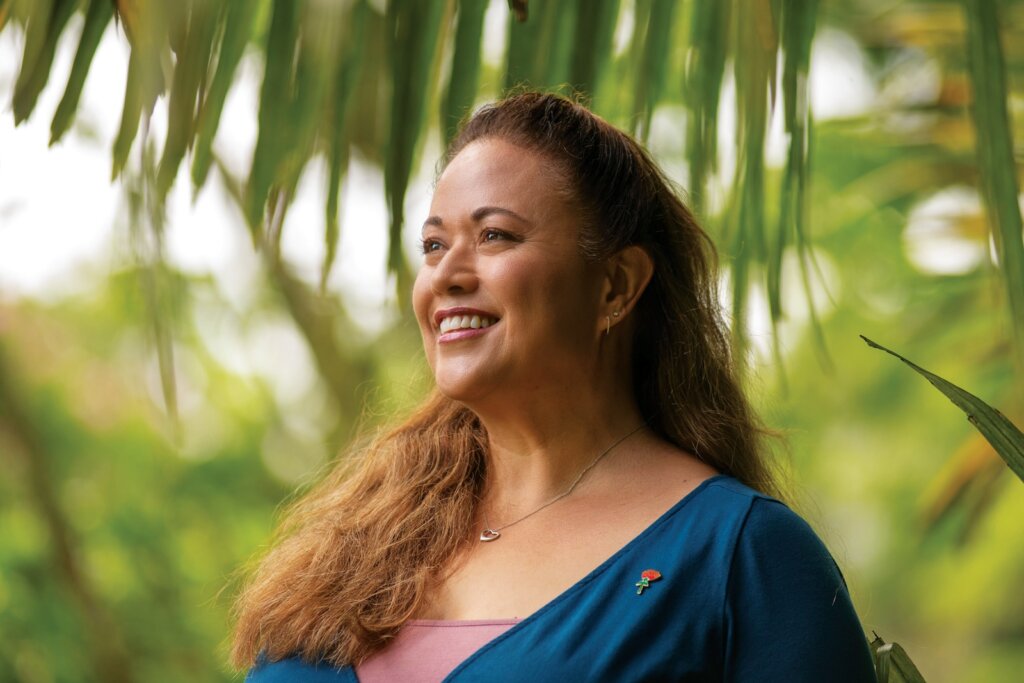
“Those can serve as the foundation in our community for collective memory to remind us of the vibrancy of our homeland. They can inspire or direct those of us who make decisions in different ways about our lands and our waters and to be aware of decisions that may destroy the very last of a species,” she says. Likewise, those chants and hula can also inspire decisions to ensure that those species continue to thrive.
Woodside Lee then spent 14 years with Kamehameha Schools’ Land Assets Division. She joined The Nature Conservancy as its Hawai‘i and Palmyra executive director in 2016.
As a leader, she incorporates many lessons from art. Among them is an acceptance of vulnerability, which comes with being an artist. When performing, hula dancers put their knowledge, intention, inspiration and spirit out into the world for others to potentially have an opinion about or critique.
“Being comfortable bringing forward your messages and ideas … is something that my time at Punahou taught me was a valuable skill. Complementing the teachings from Punahou with what I learned from my kumu hula has shaped my perspectives on leadership and my willingness to share my passion with others,” she says.
Tumua Tuinei ’14
From Stadiums to Stand-up
By Ben Yuri Biersach ’87
If you faced off on the gridiron against Tumua Tuinei ’14 in high school, the hard-hitting linebacker for the Punahou football team probably made you cry. These days, as an in-demand stand-up comedian, Tuinei is in the business of making you laugh – and business is booming. His brand of irreverent, locally-sourced comedy recalls Hawai‘i funnyman legends like Rap Reiplinger ’68, Frank De Lima and Andy Bumatai, and today he performs to sold-out shows throughout the islands.
Tuinei caught the entertainer bug early, as a 7 year-old obsessed with magic tricks. “I always had a deck of cards in my hands,” he remembers. “I did a few birthday parties and was known as The Youngest Magician in Hawai‘i.”
He was also making magic on the football field in the ‘Ewa Beach Pop Warner leagues, but he had a lot to live up to. In O‘ahu gridiron circles, the name Tuinei weighs heavily on those who wear it; Tumua’s father Tom and uncle Mark ’78 were both local prep legends who played college ball at the University of Hawai‘i and then professionally in the NFL. Tumua, while speedy and strong, lacked the stature of his forebears. “I obviously didn’t get their height,” he chuckles ruefully. “They were both giants at 6-foot-5. I’m 5-foot-9 on a good day. Those were big shoes to fill … literally.”
Tuinei also had a strong desire to attend Punahou – in large part inspired by his uncle Mark’s athletic legacy at the School – and was admitted to the Academy. Tuinei’s defensive presence kickstarted the most successful multi-year run in Punahou gridiron history. During his tenure on the team, the Sons of O‘ahu won ILH titles and played in the state championship game in three consecutive seasons. As a senior captain and all-ILH first-teamer in 2013, Tuinei helped his squad go unbeaten and capture a coveted koa trophy.


It was as a senior that Tuinei also got a taste of what his future might hold after football. He was cast as an actor – with a few lines of dialogue – in the 2014 Variety Show. “My very first time on stage was at Punahou,” he recalls. Tuinei walked-on for the University of Hawai‘i football team, coached at the time by Norm Chow ’64, and took acting courses throughout his five years at the school. He also enrolled in a stand-up comedy class that required periodic live performances at open-mic nights in local bars. Tuinei was hooked.
Meanwhile, on the football field he was being used sparingly, and it became clear to him that the NFL would not be in his future – but professional stand-up comedy might. He graduated in 2019 with a degree in Communicology and a theatre minor.
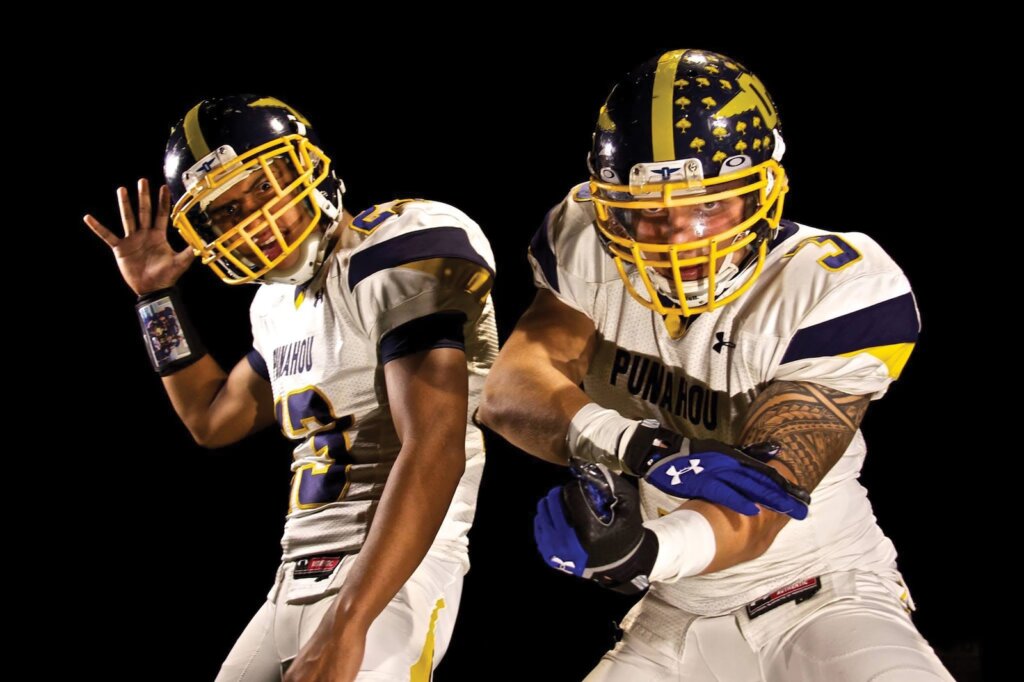
He was then given an opportunity to follow in his father’s footsteps and transition from football to a sought-after job as a stevedore. He committed to working on the docks – but used his time off to do stand-up and perform at events.
During the pandemic, Tuinei’s expert use of social media to share his work garnered him online followers and then, after lockdown lifted, standing-room-only audiences; within two years of finishing college and taking the stevedore job, Tuinei realized he had a real chance of making it as a full-time comedian. So he took the plunge. “I sat down and had a long talk with my dad,” he recalls. “It was a tough decision to let the job go and pursue my career. My dad said, ‘we’ll know you made a great choice if you don’t have to come back here.’ And I haven’t gone back yet, so … so far, so good!”
Today, on his YouTube channel Tuinei shares excerpts from his live shows, posts comedy skits, and hosts a podcast. Hollywood, too, is taking notice: he landed a small comedic role in the upcoming live-action version of “Lilo & Stitch.”
Now repped by powerhouse talent agency CAA, Tuinei hopes to broaden his comedic reach: more acting, a Netflix special, and a major mainland theatre tour are all near-term goals for him. He also recently became a father – to daughter Dovey – who makes frequent guest appearances on his socials.
Seven years into his career as a comedian, Tuinei acknowledges the power of self-belief and serendipity in achieving success, and he is grateful to Punahou for playing a critical part in the journey.
“Attending Punahou impacted a lot in my life,” he says. “It helped me with my football career, it got me looks from coaches at UH, and from there I got into comedy. Everything happens for a reason. Punahou was really important to me, and it will always have a special place in my heart.”
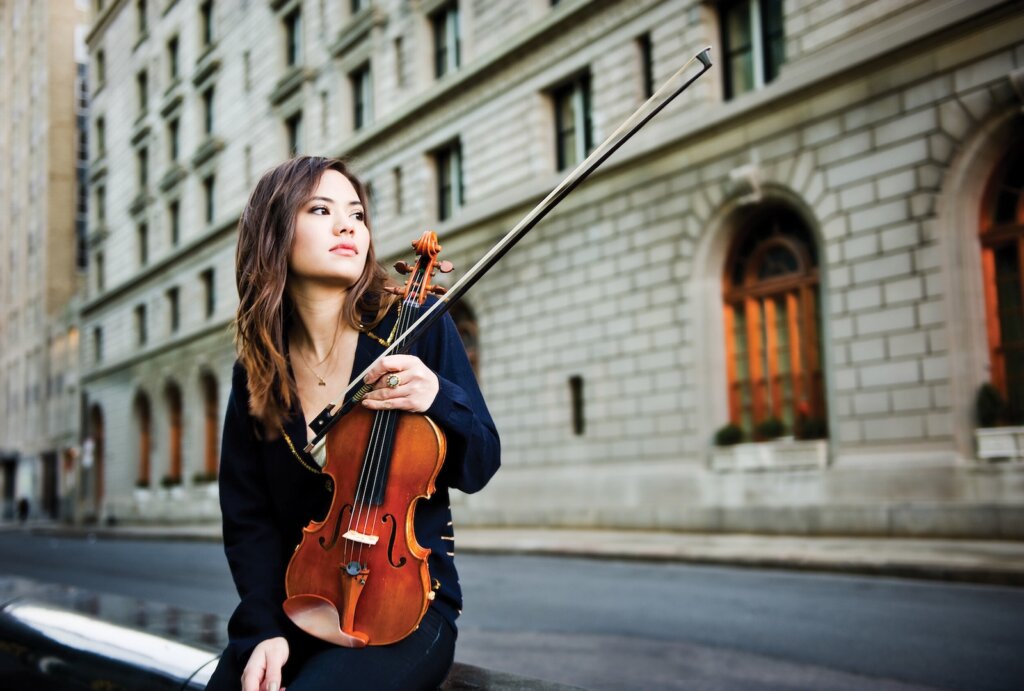
Laura Keller ’06
Finding Her Forte
By Ben Yuri Biersach ’87
The year is 1991 and Laura Keller ’06, a preschooler in Kāne‘ohe, has made the acquaintance of a musical playmate who would become a dear companion for the next three decades. She doesn’t realize it at the time, but this is one of the most significant days in her life: she has just been introduced to the violin.
The music teacher who presented the instrument in class that day was Helen Higa – soon to become head of the Music School’s recently-established Suzuki Violin Program at Punahou. Their paths would cross again, when Keller was admitted as a kindergartner in the Class of 2006. For the next 13 years, under the expert guidance of Higa and other teachers, Keller’s music brightened the corridors of Montague Hall and established her legacy as one of the most accomplished violinists to be educated at the School.
An important Suzuki Method tenet emphasizes that “you practice only on the days you eat,” and Keller’s adherence to this rule paid extraordinary musical dividends to her development as a young artist. A small sampling of her precocious solo repertoire while at Punahou includes Vivaldi’s “Concerto in A Minor” as a kindergartner, Saint-Saëns’ “Introduction and Rondo Capriccioso in A Minor” as a 10-year-old, and Brahms’ “Violin Concerto in D Major” as a senior. She performed numerous times as a soloist with the Honolulu Symphony and made multiple featured appearances on National Public Radio’s classical music program “From The Top.”
When Keller contemplates why she was so driven to practice and perform as a youth, she recalls, “I enjoyed the challenge of it and seeing the improvements you can make when you put work into something. That felt exciting to me.” Taking the stage as a featured artist also helped the natural introvert self-actualize and communicate in ways she wouldn’t have been able to without an instrument in her hand. “Performing violin was a way I felt comfortable and confident expressing myself,” she explains. “It allowed me to convey things I didn’t always have the words for, and in a setting where I was listened to and taken seriously.”
Following Punahou, Keller studied violin performance at the New England Conservatory in Boston and the Yale School of Music’s masters program. She moved to New York City, seemingly poised to navigate a path within the highly competitive world of talented professional soloists.
Then, unexpectedly, her passion for the violin waned.
After over 20 years of daily playing, Keller suddenly found that weeks would go by between practices. She worked for a music school, but only in an administrative capacity. She considered obtaining a business or law degree.
Keller’s uncertainty about her musical future continued for several years, until in 2015 she made a cross-country move to San Francisco and subsequently committed to the pursuit of an orchestral career. In a fresh environment under new musical tutelage, she rekindled her love for the violin and began auditioning for roles with professional orchestras throughout the country.
In 2019 Keller won a violinist position with the San Francisco Ballet Orchestra. Recently she was promoted to assistant principal, second violin. During the ballet’s off-season, she performs as a supernumerary with the San Francisco Opera Orchestra and the San Francisco Symphony. She also stays engaged with the local community through an organization called Groupmuse to help bring chamber music to people who otherwise might not be able to attend an orchestra concert in person.
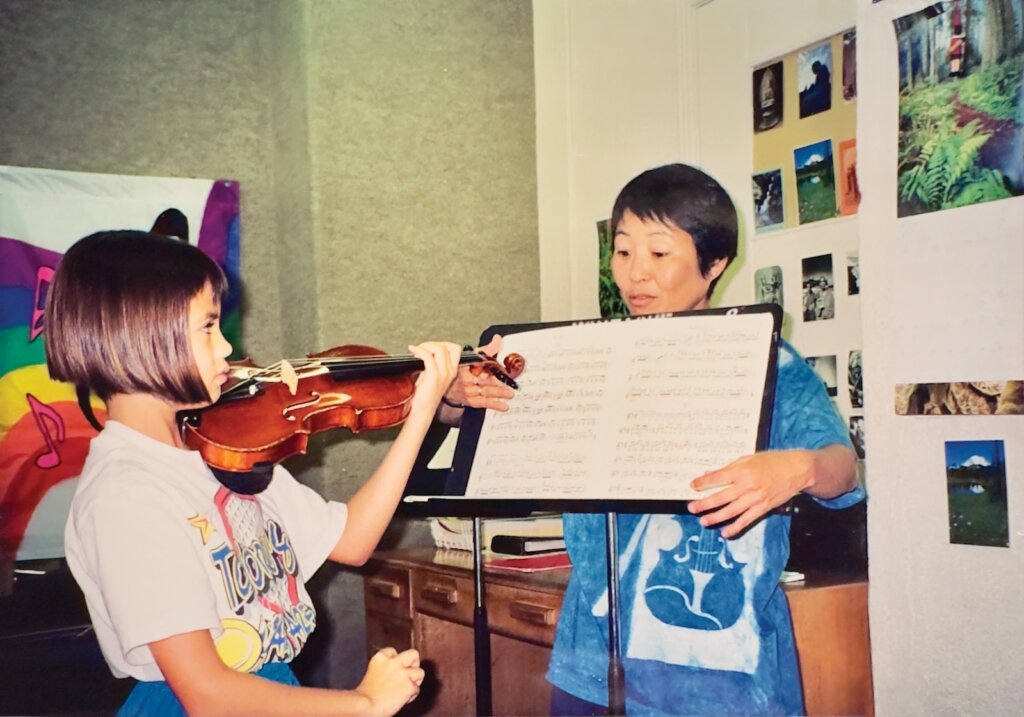
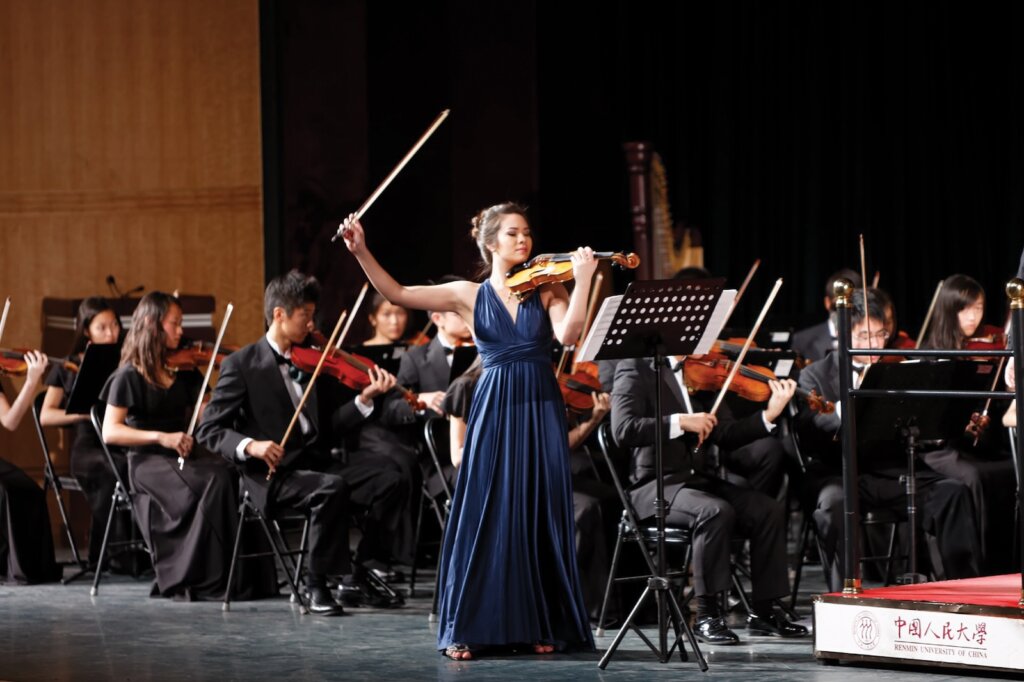
Now happily ensconced in her role as a professional musician, Keller reflects on the years in New York that were critical to her personal and career development. “That was a very important time for me, to reassess and reevaluate. It really made me appreciate being able to do music for a living even more.”
Today the companion she met as a preschooler is still with her, nestled under her chin every day she eats, helping her bring joy to Bay Area audiences. Keller knows she’s blessed to be able to support herself using a skill she’s excelled at since toddlerhood. “I feel so fortunate to have this sense of security now that I have my career set and I can rely on that. I’m just happy that I am doing something for work that doesn’t really feel like work!”
